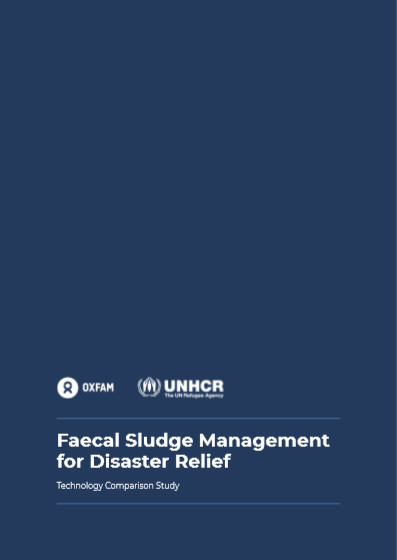Faecal Sludge Management for Disaster Relief: Technology Comparison Study
 |
textbook May 2019 ; 96 pages
Ed. ARUP - London UNHCR - Genève OXFAM UK - Oxford
Downloadable format: PdF
Downloadable from the publisher
Editor Presentation
Abstract:
Arup have conducted this technical comparison study of Faecal Sludge Management (FSM) techniques for disaster relief, on behalf of Oxfam UK (Oxfam). The aim of the study is to draw conclusions on best practice FSM for disaster relief, from evidence gathered through practical experience in the Rohingya refugee camps close to Cox’s Bazar, Bangladesh referred to as CXB throughout the report.
A comparison of the FSM technologies is provided in section 4 of this report, and guidance on technology selection for future disaster relief situations is provided in section 5. Details of each FSM technology visited in CXB are given in section 6.
1. Constructed Wetlands
2. GeoTubes
3. Lime (Three main types; lagoons, in barrel and three tanks)
4. Anaerobic Lagoons
5. Aeration Plant
6. Upflow Filters (Two main types; with and without pre-settlement)
7. Biogas
8. Anaerobic Baffled Reactors (ABR)
Target Audiences:
Cooperation actors , Technician , Engineer, designer , Local and national decision makers , Health professionals
Keywords: |
humanitarian (CI) (DT) (ET) (ope) , sludge (CI) (DT) (ET) (ope) , sludge treatment (CI) (DT) (ET) (ope) |
Country: |
Publishers/Broadcasters: |
|
ARUP - London - United Kingdom |
UNHCR
-
Haut Commissariat des Nations Unies pour les réfugiés - Genève - Switzerland |
OXFAM UK
-
OXFAM United Kingdom & Ireland - Oxford - United Kingdom |
If there is a broken link, we will be pleased to receive a message: communication@pseau.org